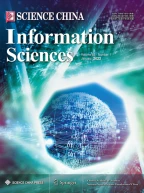Abstract
In this paper, we develop and analyze an energy efficient ARQ (automatic repeat request) initialized transmit diversity protocol for cooperative communications. Medium access control (MAC) layer packet retransmission limit (similar to aShortRetryLimit or aLongRetryLimit [802.11–1997]) has been used as an actuator for transmit cooperative diversity initialization. We take the channel state information (CSI) as a function of retransmission tries and the number of retransmission tries is modeled as a random variable. Relays close to the source node are chosen for the transmit cooperation. Closed form expressions are obtained for symbol error rate (SER), outage capacity and outage probability for the proposed scheme in shadowed fading channels. This cooperative scheme achieves lower signal-to-noise ratio (SNR), stumpy outage probability, higher bandwidth, and transmit energy efficiencies for desired average symbol error rate (ASER) than the preceding ARQ based cooperative protocols. Finally, the results of computer simulations are included to demonstrate the efficacy of the proposed scheme and to verify the accuracy of the analytical expressions.
Similar content being viewed by others
References
Laneman J N, Tse D N C, Wornell G W. Cooperative diversity in wireless networks: efficient protocols and outage behavior. IEEE Trans Inform Theor, 2004, 50(12): 3062–3080
Bletsas A, Khisti A, Reed D P, et al. A simple cooperative diversity method based on network path selection. IEEE J Sel Area Commun, 2006, 24(3): 659–672
Zhao B, Valenti M C. Some new adaptive protocols for the wireless relay channel. In: Proceedings of Allerton Conference on Communication, Control and Computing, Mouticello. 2003. 299–324
Yu M, Li J. Is amplify-and-forward practically better than decode-and-forward or vice versa? In: Proceedings of Acoustics, Speech, and Signal Processing, ICASSP 2005. IEEE Int Conf, 2005, 3: 365–368
Ng C T K, Goldsmith A J. Capacity and power allocation for transmitter and receiver in fading channels. Proc IEEE ICC, 2006, 8: 3741–3746
Ibrahim A S, Sadek A K, Su W, et al. Relay selection in multi-node cooperation communications: When to cooperate and whom to cooperate with? In: IEEE Global Telecomunications Conference. San Francisco: IEEE, 2006. 1–5
Dianati M, Ling X H, Naik K, et al. A node-cooperative ARQ scheme for wireless Ad hoc networks. IEEE Trans Veh Tech, 2006, 55(3): 1032–1044
Yu G D, Zhang Z Y, Qiu P L. Cooperative ARQ in wireless networks: protocols description and performance analysis. In: Proceedings of IEEE ICC. Istanbul: IEEE, 2006. 3608–3614
Zhao B, Valenti M C. Practical relay networks: a generalization of hybrid-ARQ. IEEE J Sel Area Commun, 2005, 23(1): 7–18
Shankar P M. Outage probabilities in shadowed fading channels using a compound statistical model. IEE Proc Commun, 2005, 152(6): 828–832
Nakagami M. The m-distribution-a general formula of intensity distribution of rapid fading. In: Hoffman W G, ed. Tatistical Methods in RadioWave Propagation. Oxford: Program Press, 1960. 3–36
Gradsheteyn I S, Ryzhik I M. Table of Integrals, Series, and Products. 6th ed. New York: Academic press, 2000
Cui S, Goldsmith A J, Bahai A. Energy-efficiency of MIMO and cooperative MIMO in sensor networks. IEEE J Sel Area Commun, 2004, 22(6): 1089–1098
Kramer G, Gastpar M, Gupta P. Cooperative strategies and capacity theorems for relay networks. IEEE Trans Inf Theor, 2005, 51(9): 3037–3063
Rappaport T S. Wireless Communications: Principle and Practice. 2nd ed. New Jersey: Prentice Hall, July 1999
Proakis J G. Digital Communications. 4th ed. New York: McGraw-Hill, 2001
Li Y H, Vucetic B, Zhou Z D, et al. Distributed adaptive power allocation for wireless relay networks. IEEE Trans Wirel Commun, 2007, 6(3): 948–958
Goldsmith A. Wireless Communications. Cambridge: Cambridge University Press, 2005
Author information
Authors and Affiliations
Corresponding author
Additional information
Supported by the National Natral Science Foundation of China (Grant No. 60602058), the National High Technology Research and Development Program of China (Grant No. 2006AA01Z257)
Rights and permissions
About this article
Cite this article
Ahmed, I., Peng, M., Wang, W. et al. Performance analysis of a random ARQ initialized cooperative communication protocol in shadowed Nakagami-m wireless channel. Sci. China Ser. F-Inf. Sci. 52, 1027–1036 (2009). https://doi.org/10.1007/s11432-009-0030-z
Received:
Accepted:
Published:
Issue Date:
DOI: https://doi.org/10.1007/s11432-009-0030-z
